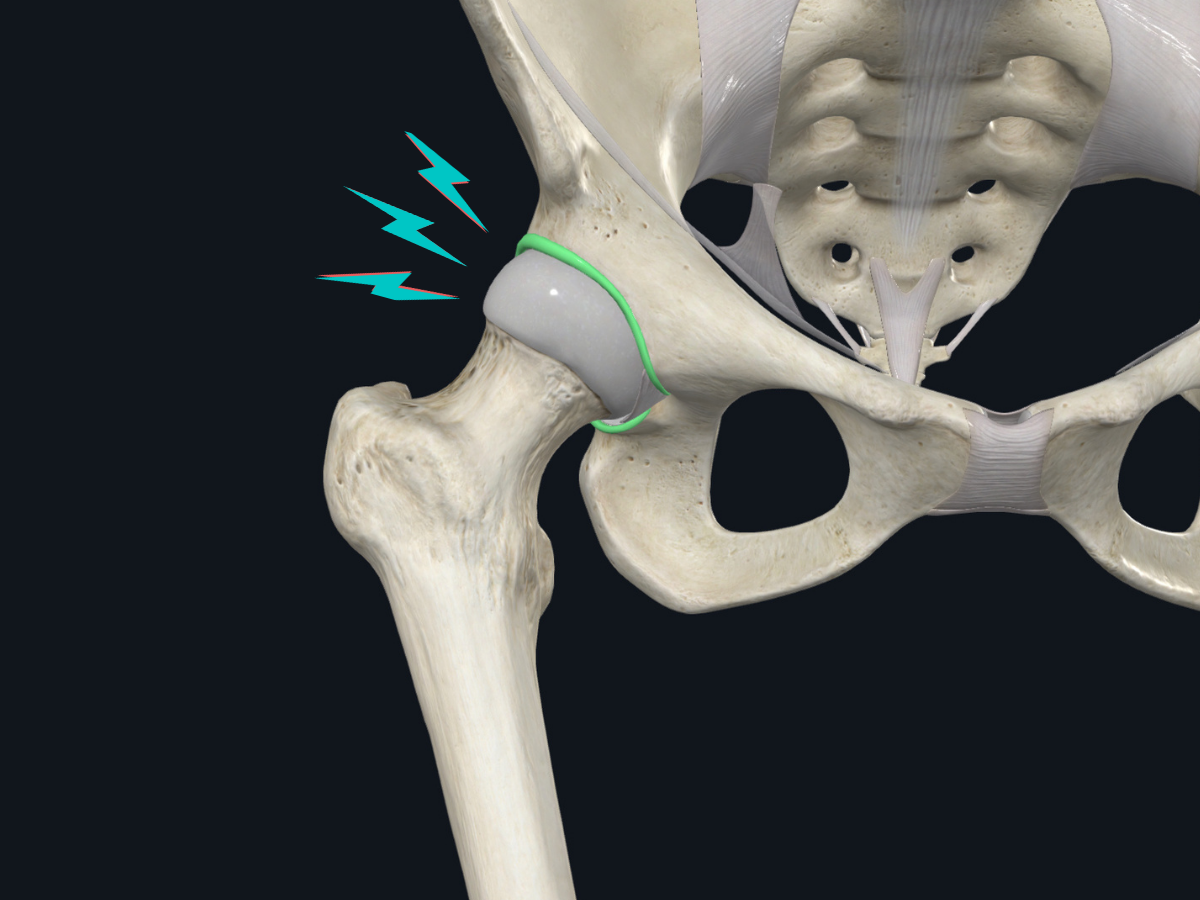What is gluteal tendinopathy?
- Pain in the outside (lateral) part of the hip
- Irritation and/or compression to the gluteus medius and gluteus minimus muscles
What are other names for gluteal tendinopathy?
- Greater Trochanteric Pain Syndrome
- Often previously diagnosed as hip (trochanteric) bursitis, however ‘itis’ or inflammation is not the primary cause
Anatomy and function

- Hip abduction (lifting leg out to the side) and keeping the pelvis balanced while standing on one leg are controlled by two muscle synergies:
- Trochanteric abductor muscles
- Gluteus medius and gluteus minimus muscles that attach to the pelvis and greater trochanter of the femur (bump on outside of your thigh bone at the hip)
- Controls 70% of these motions
- Iliotibial band (IT band) tensioning muscles
- Tensor fascia lata, vastus lateralis, and gluteus maximus muscles
- These muscles connect into the iliotibial band, which attaches down by the knee
- Controls 30% of these motions
- Trochanteric abductor muscles
- With gluteal tendinopathy, it is common to see hypertrophy (muscle growth) of the IT band tensioning muscles, and atrophy (muscle wasting) of the trochanteric abductor muscles
What causes hip tendon pain?
- Sedentary population: lack of tensile loading (depriving the tendon of normal stresses that keep it healthy)
- Active population: Abnormal load on the tendon (quick changes in type, intensity, frequency of movement/exercise)
- Can also be from compressive forces due to joint positioning into adduction:
- Sitting with legs crossed
- Running with feet crossing midline
- Standing with hip shifted to one side (relaxing or “hanging” on your hip)
How common is gluteal tendinopathy?
- Primary cause of lateral hip pain
- Most prevalent tendinopathy in the lower limb
- Most commonly affects women >40 years of age
- Between ages of 50-79 affects up to 23.5% of women and 8.5% of men
What are the common symptoms of lateral hip pain?
- Pain when touching the outside of the hip
- Pain greater at night with sleeping on side
- Pain sitting with legs crossed
- Pain with single leg activities (walking, jogging, standing on one leg to dress)
- Pain with prolonged sitting and moving to standing after
- Sometimes pain referral down the outside of the thigh
How can therapy help?
Assessment
- Markerless motion capture to assess loading strategies for functional movements. Specifically looking at pelvic control and amount of hip adduction with single leg activities such as standing, squatting and hopping on one leg. These movement strategies can cause increased compressive load on the gluteal tendons.
- Running analysis (if this is an activity you do)
- Strength testing for hip abductor and internal rotator muscles
- Hands on exam to determine your specific limitations
Treatment
- Advice on modifying certain activities based on your specific case
- Exercises based off of your assessment findings to help with pain relief, improve strength and function, and help you return to your activities.
- Hands-on manual therapy or acupuncture to help with pain relief and mobility
For a more detailed explanation on tendon pain and injuries, check out our tendon blog.




.png)
